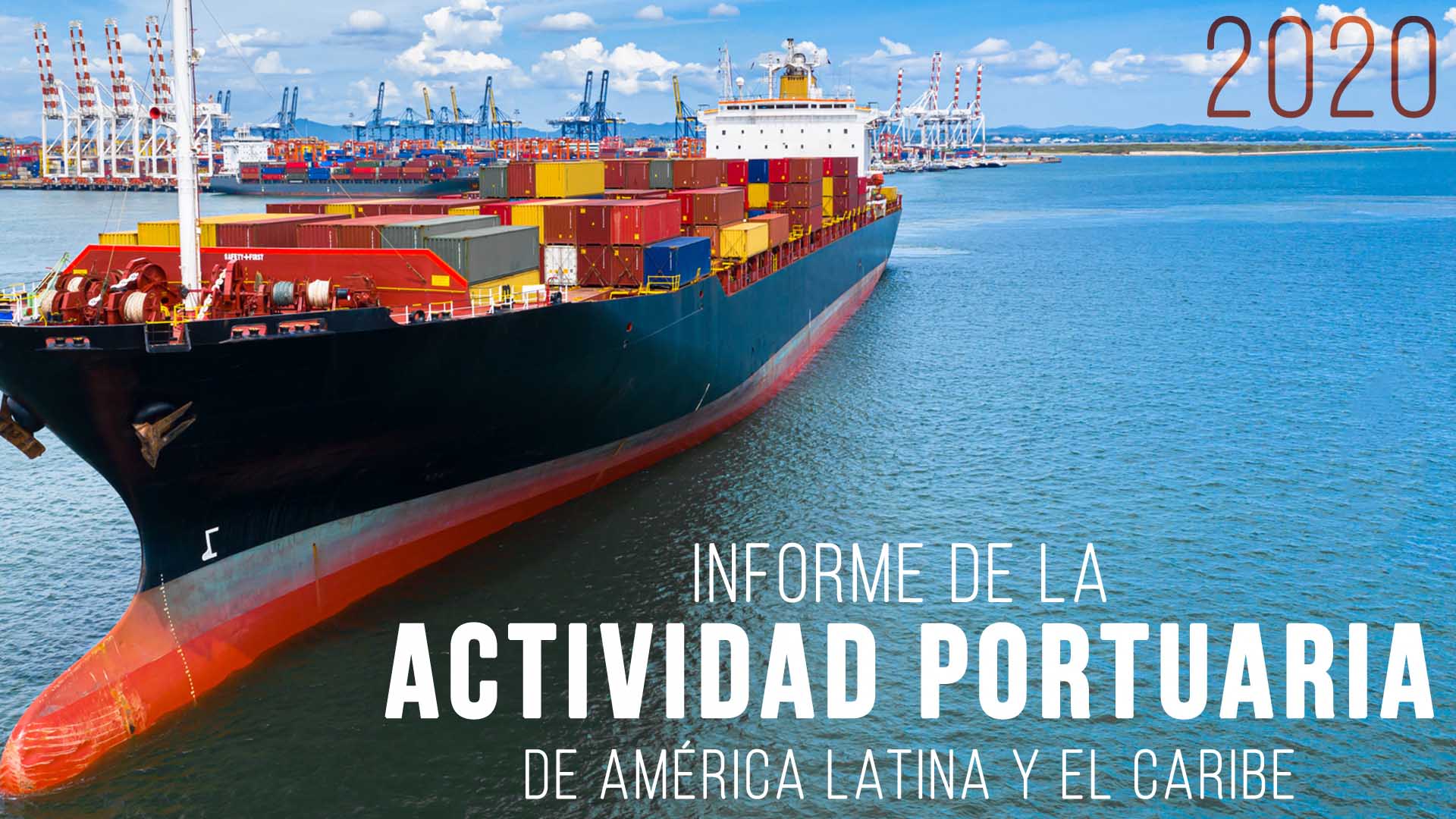Container Throughput in the Region’s Ports Held Steady in 2019 and Contracted in the First Half of 2020 Due to the COVID-19 Pandemic
Work area(s)
ECLAC released today a new edition of its traditional Port Activity Report, which includes additional analysis of COVID-19’s effects on the ports of Latin America and the Caribbean.

Container throughput in Latin America and the Caribbean held steady in 2019, increasing by just 0.04% compared with the previous year, according to the Port Activity Report (in Spanish) launched today by the Economic Commission for Latin America and the Caribbean (ECLAC). The sample encompasses 36 countries and territories, accounting for 125 ports and port areas in the region.
The total volume of activity in 2019 surpassed 54.2 million TEU[1], which represents 6.5% of global throughput, marking a slight decline from 2018 (when it amounted to 7.1% of global throughput). The ten countries contributing the most to the total volume of cargo handled represented 81.0% of regional movement. These are (from highest to lowest based on the quantity of TEU mobilized): Brazil, Panama, Mexico, Chile, Colombia, Peru, Ecuador, the Dominican Republic, Argentina and Jamaica.
According to data compiled by the Infrastructure Services Unit of ECLAC’s International Trade Division, in 2019, the East Coast of South America (ECSA) recorded a -0.8% decline in activity in its ports and port areas, as measured in terms of volume. The West Coast of South America (WCSA) also saw its operations fall by -3.1% in 2019. The Caribbean (which includes Colombia’s Caribbean coast, but not Venezuela’s) experienced 2.3% growth in total throughput, while Central America underwent a -7.0% decline. The Gulf of Mexico area grew 3.0% in comparison with 2018, and Pacific Mexico 1.0%. Meanwhile, Panama experienced growth of 15.0% on its Pacific coast while its Caribbean coast notched a 1.0% increase.
Because in recent months the world has witnessed, and continues to witness, a drastic change in the organization of everyday life – which has also had a major impact on business, trade and navigation – ECLAC’s annual port activity report includes an analysis of the effects of the COVID-19 pandemic on port performance in the first half of 2020, in comparison with the same period of 2019, for selected ports in Latin America and the Caribbean and other regions of the world.
The impact of the COVID-19 pandemic on port performance in 2020 requires that all forecasts regarding stability and future growth be revised. While a projection made in the last quarter of 2019 foresaw 3.6% growth in container trade worldwide, the most recent estimate published in July points to a -7.2% drop.
Among all the ports selected in ECLAC’s analysis of the January-June 2020 period, in Central America, the West Coast of South America (WCSA) and Mexico, activity levels fell on average in comparison with the same period of 2019. The WCSA showed the steepest decline, with a -15.0% year-on-year drop during that six-month time span. Mexico’s Gulf and Pacific coasts suffered similar declines of -14.1% and -14.0%, respectively.
The average decline in selected Central American ports was -7.0% from January through June 2020, while the Caribbean ports under study marked an average decrease of -4.8% in the same period.
Meanwhile, Panama’s Caribbean coast and its Pacific coast saw activity increase by 12.7% and 16.1%, respectively, during the first half of 2020 in comparison with a year earlier, as did the East Coast of South America, where throughput rose by 3.7% from January to May 2020, in comparison with January to May 2019.
[1] This is the acronym for Twenty-foot Equivalent Unit. It refers to the standard measurement of a metallic box of standardized size that can be easily transferred between different modes of transport, such as ships, trains and trucks.
Related content

Movimiento portuario LAC
Comportamiento del movimiento de contenedores en los puertos de América Latina y el Caribe en 2019 y de los principales puertos durante los primeros meses de 2020
Country(ies)
- Latin America and the Caribbean
Contact
Public Information Unit
- prensa@cepal.org
- (56 2) 2210 2040